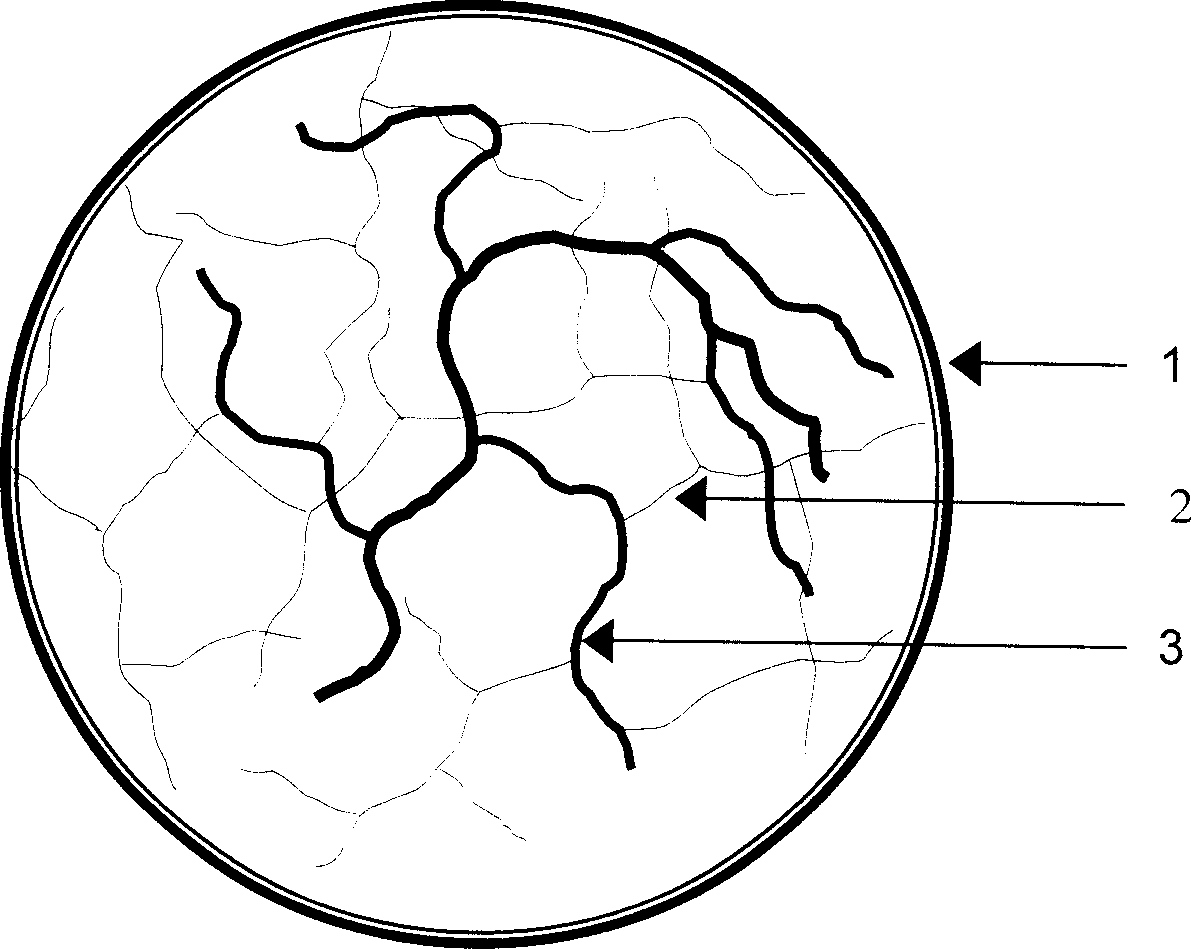Method for establishing symboitic relationship for arbuscular nycorrhizal fungi and tomato hairy root
A symbiotic relationship and hairy root technology, applied in horticultural methods, botanical equipment and methods, plant regeneration, etc., can solve the problems that sterile conditions cannot be obtained and AM fungi cannot be purely cultivated
- Summary
- Abstract
- Description
- Claims
- Application Information
AI Technical Summary
Problems solved by technology
Method used
Image
Examples
Embodiment 1
[0018] 1. Induction of tomato hairy roots:
[0019] Take 10 ruby and Fengshun tomato seeds each, put them in water for 12-24 hours, sterilize with 10% sodium hypochlorite for 15-20 minutes, wash with sterile water 5 times, and sow them on 2% sucrose agar medium ; After the culture dish was placed in the dark at 25°C for 7 to 10 days, the seedlings were cut into three parts: hypocotyl, mesocotyl and epicotyl on the ultra-clean workbench. 7 ~10 8 Cfu / ml Agrobacterium rhizogenes (Agrobacterium rhizogenes) R1000 bacterial suspension soaked for 20-30 minutes, washed 5 times with sterile water after taking it out, then wiped dry the water on the surface of plant tissue with sterile filter paper, inoculated to 2% cultured on sucrose agar medium at 25°C under dark conditions; during the cultivation period, the formation of hairy roots was often observed, and hairy roots began to appear on the surface of plant tissues after about 7 to 15 days; when the hairy roots grew to 2 to 5 cm ...
PUM
 Login to View More
Login to View More Abstract
Description
Claims
Application Information
 Login to View More
Login to View More - R&D
- Intellectual Property
- Life Sciences
- Materials
- Tech Scout
- Unparalleled Data Quality
- Higher Quality Content
- 60% Fewer Hallucinations
Browse by: Latest US Patents, China's latest patents, Technical Efficacy Thesaurus, Application Domain, Technology Topic, Popular Technical Reports.
© 2025 PatSnap. All rights reserved.Legal|Privacy policy|Modern Slavery Act Transparency Statement|Sitemap|About US| Contact US: help@patsnap.com


